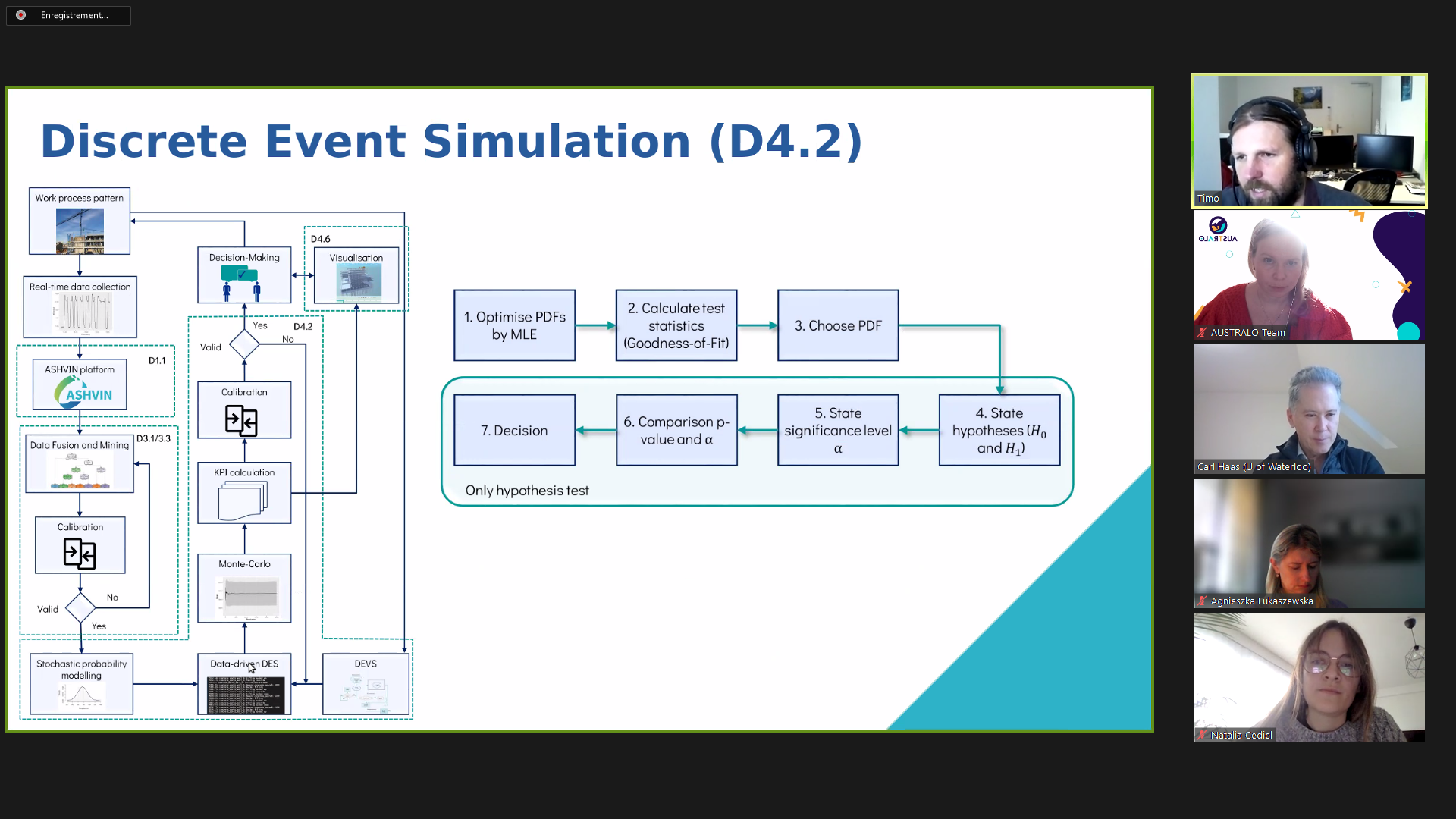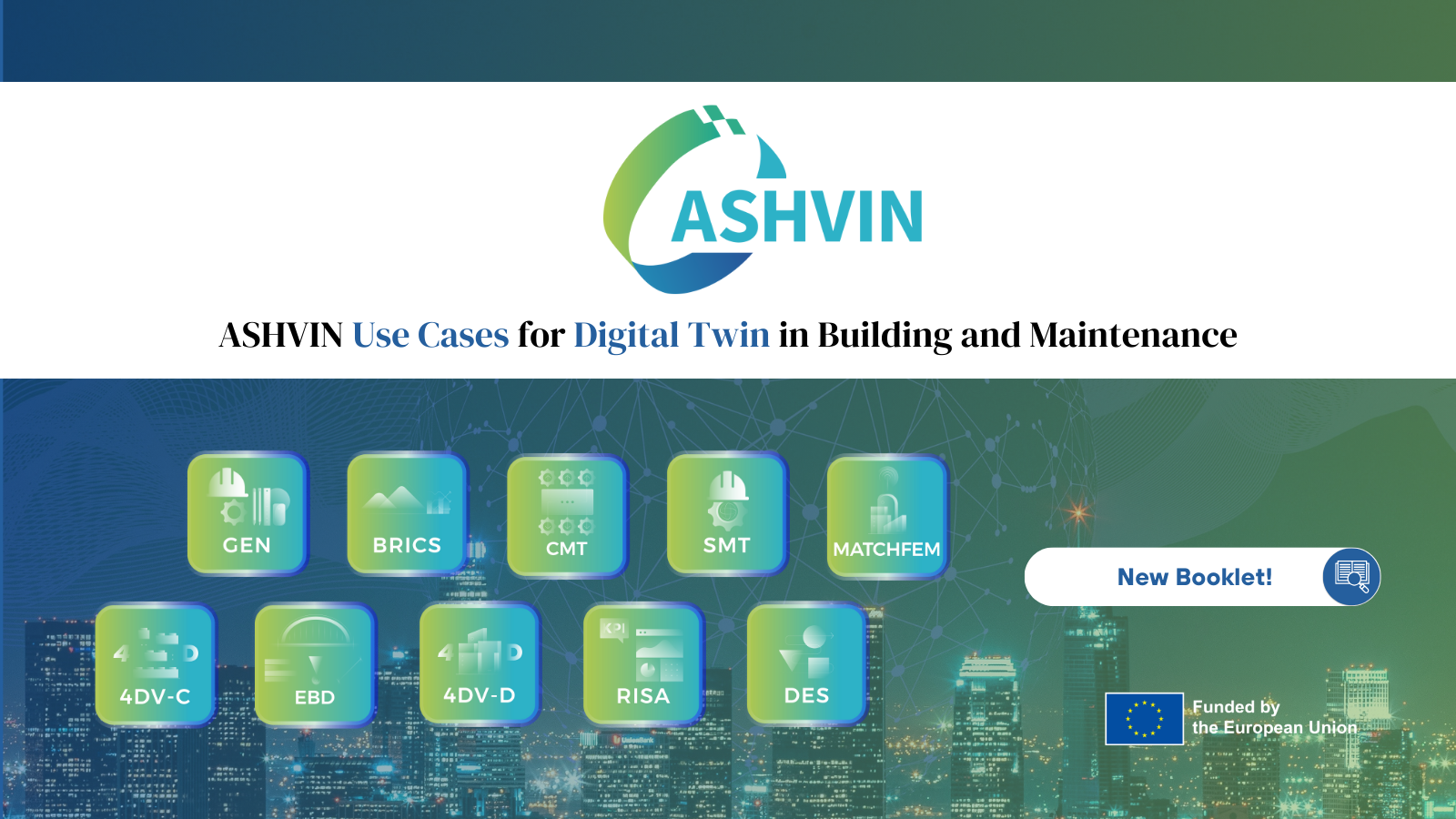The ASHVIN project gathers 14 partners across 9 European countries, and they collaborate for three years to develop an intelligent construction solution deploying digital twin technologies, which will boost the productivity and the safety of the construction industry. The accomplishment of the 2nd project year marked the delivery of critical technical milestones; the 10 technology tools of the digital twin ASHVIN toolkit and the IoT-driven digital twin platform are running. This toolkit running with the digital twin driven IoT-platform is being demonstrated at 10 demonstration sites.
Heading towards the final project year and making the ASHVIN technology sustainable in the construction technology markets, the project has presented the technology results to its Advisory Board (↗️) to obtain recommendations and insights from the industry and academia. The advisory board gathers six internationally renamed experts in the field of digitalisation of the construction industry, and in November – December 2022, three experts met with the ASHVIN team to follow up on the project’s technical progress.
Mathieu Boda (↗️), technical and business developer at CERVALL(↗️) , a French software company developing digital twin solutions. Since this meeting, Mathieu took a new position leaving CERVALL. He encouraged the ASHVIN team to build the solution in open access and to collaborate with related national initiatives, such as IRT-T Systematics (France) Digital Twin Projects.
Salla Eckhardt(↗️) , Director of Digital Building Lifecycle and Innovation at Microsoft (↗️) , where she drives the digital transformation of the built environment industry. Salla has a background in coordinating digital innovation projects in the field of the construction industry in Europe. For the last seven years, she has taken important management positions in Northern America, which brings a new perfective on how to design and market digital solutions beyond the European markets. She shared with the ASHVIN team that she has experienced that in the US, the end-users need to be convinced of the solution with a good story about how the solution can ease their work. The gamification of the user interface is crucial for the commercial success of digital products. Besides the technical excellence of the developed solution, to be successful in the markets, it is important to consider the psychological motivators of the end-users.
Professor Carl Haas (↗️) is chair of the Department of Civil and Environmental Engineering, the University of Waterloo (↗️) in Canada and, for six months, a visiting professor at ETH Zürich (Swiss Federal Institute of Technology in Zürich). Professor Haas has conducted research in the field of digitalisation of the construction industry for over 30 years, and he understands the aims of ASHVIN to create a set of digital twin tools to improve the productivity of construction sites. He recommends considering the construction site workers who can easily become overwhelmed by the different digital tools aiming to help their work. As these tools all operate in different environments, the users take a lot of time to learn to use the tool and then access those, which can even become counterproductive. He recommends ASHVIN look into having one common platform, sort of a clustering tool with the central interfaces for the end-users. Also, the learning curve and training of project managers are essential to increase the technology uptake at construction sites.

With these recommendations in mind, the ASHVIN team tackles the final project year with a focus on finalising the demonstration sites, fostering the dissemination of the ASHVIN solution and refining the exploitation plan. The advisory board will continue guiding the project, and the next step will be the standardisation workshop organised in February 2023.
Three other members of the Advisory Board team will also be consulted:
- Dr. H. Sebnem Düzgün from Colorado School of Mines, USA
- Prof. Heng Li from Hong Kong Polytechnic University, Hong Kong
- Prof. Martin Fischer from the Center for Integrated Facility Engineering – CIFE, Stanford University, USA





